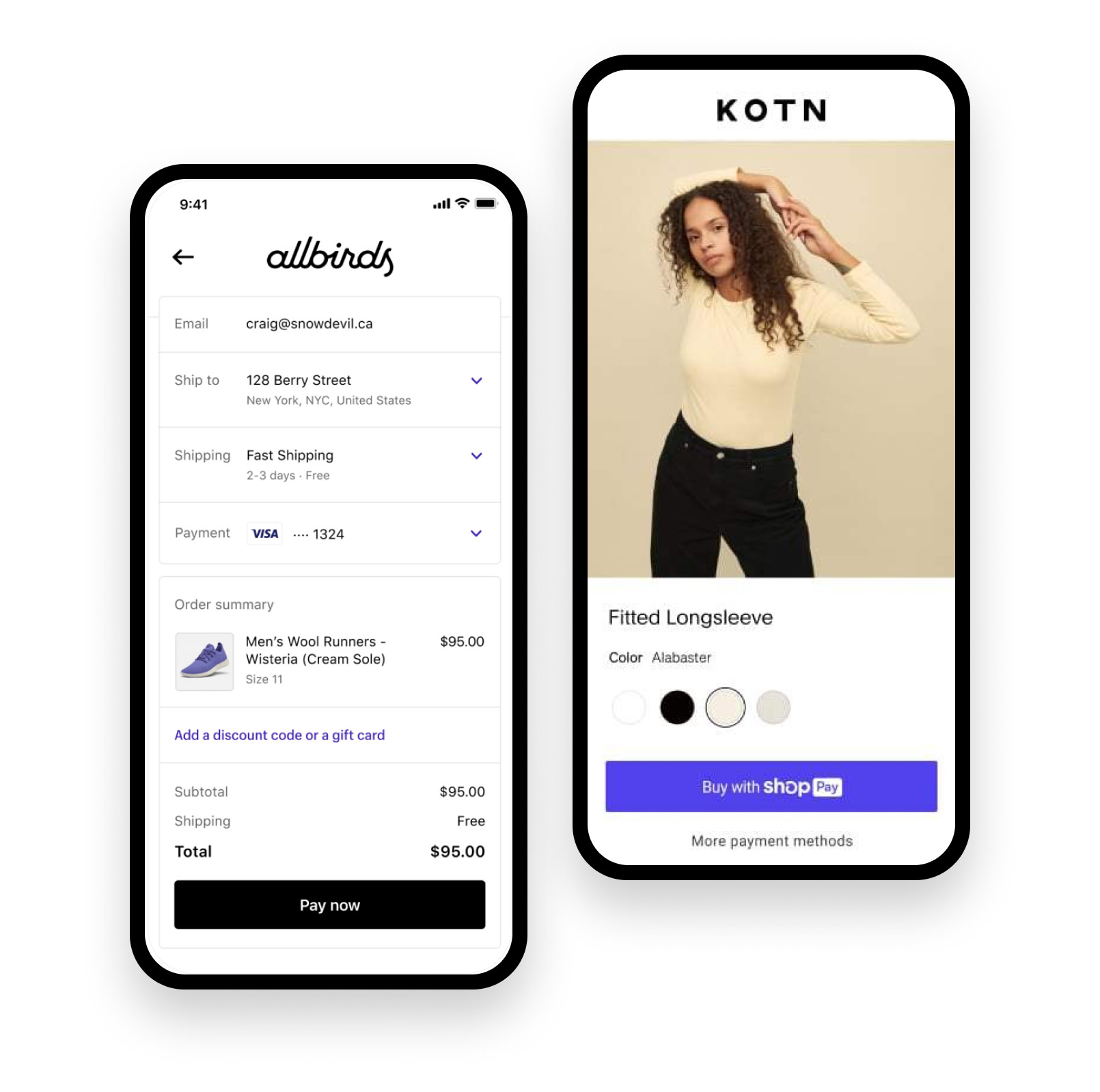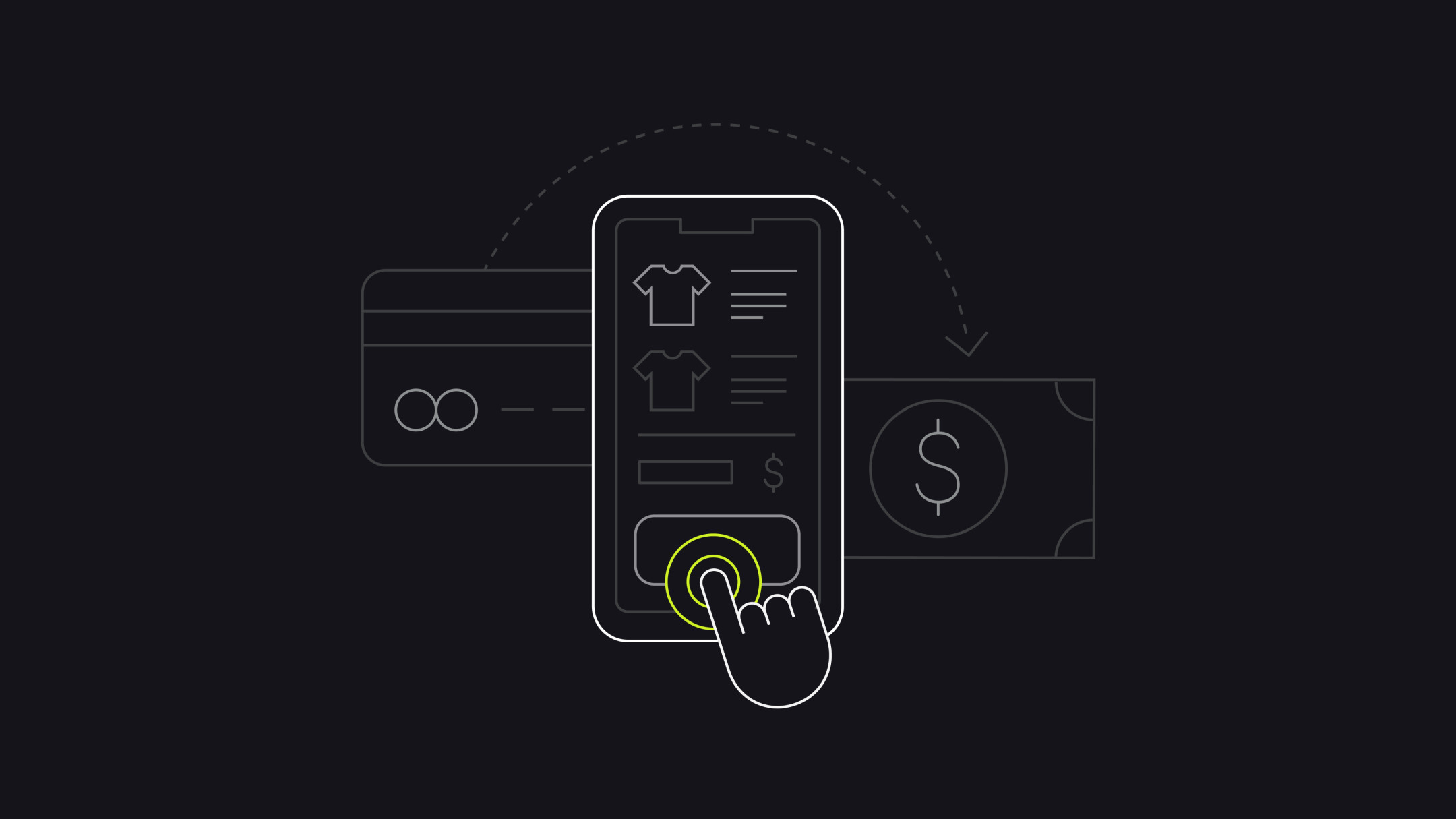Every payment processor on the market has one goal: make it as simple and easy as possible for your customers to pay you. If you’ve done the work to develop a stellar product line, attract visitors to your site, and optimize it for conversions, then at the very least, your payment gateway shouldn’t get in the way of your sale.
But that’s not always the case. If your visitors don’t make it through your checkout process and finalize their purchase, then the rest of your work doesn’t really matter. An ineffective payment processor can quite literally make or break your online store.
Choosing a payment processor is not a decision to take lightly, and we want to make sure you have all the facts to help you make the best choice for your business. In this post, we’ll be going over some of the key reasons why large businesses tend to choose third-party processors over Shopify Payments and how our tool helps speed up and streamline the payment process.
Why merchants go the ‘third-party’ route
If it’s not broken, why fix it, right? Suppose you’re migrating to Shopify from another ecommerce platform. In that case, we know that you’re probably already using a third-party processor since most other platforms don’t have a native payment gateway.
Before we dive into some of the common issues we see with third-party payment processors, we wanted to clear up a few misconceptions that we see brands have about Shopify Payments.
“Shopify Payments is just for SMEs and startups.”
Large brands need conversion-boosting features in their checkout, and Shopify Payments is proven to be the best gateway to choose if you want higher conversion rates.

Shop Pay is a one-tap checkout exclusive to Shopify Payments which leads to super-fast and frictionless conversions—converting 56% higher on desktop, and 91% higher on mobile compared to a standard checkout.
“The majority of our customers today are discovering new products on the go on their mobile devices, and if they have to fill out a form, we’ve lost them," says Benjamin Sehl, co-founder of Kotn. This sustainable clothing retailer has seen 37% month-over-month growth since launching in 2015. "Enabling Shop Pay in our checkout has really made the most painful point of the customer experience delightful, and since it’s tied into the million-merchant ecosystem, even new customers can check out in one click.”

And at a time of great economic uncertainty and job insecurity, brands can let their shoppers buy now, pay later with Shop Pay Installments. (Join the waitlist)
“We already have a relationship with our third-party provider.”
Most of our larger merchants have payment providers that they’ve been using for years. Rather than conducting two migrations simultaneously (payment processor and ecommerce platform), they decide to connect their existing provider to Shopify and call it a day. While this may seem easier in the short-term, it can lead to some headaches in the long run from duplicated efforts to missed customer service or performance issues.
For example, on one of the brands on our platform, we noticed that a bug with their third-party processor went unnoticed for an entire month, leading to millions of dollars in lost sales for the business. Shopify Payments’ engineering team would have been able to fix this issue in under an hour. If you’re a high-volume brand, you don’t have time to sit and wait for weeks for a problem to get fixed, especially if that issue is causing you to hemorrhage money.
“Migrating to Shopify Payments will take too long and is too complicated.”
When people hear the word ‘migration,’ they naturally assume that the process will require some downtime. Shutting your site down for a few seconds or minutes could potentially mean missing out on hundreds of thousands of dollars in revenue.
Fortunately, migrating to Shopify Payments is relatively painless. Even the largest brands can get up and running with our payment platform in under five minutes, and there’s no downtime. You’ll also be saving a ton of time in the long run. Shopify Plus customers spend up to 80% less on their online stores than with legacy systems, meaning you can invest more of your money into your brand and optimizing your customer experience, rather than ineffective IT processes.
The most common issues with payment processors
How do you know if your payment processor is letting you down? We’ve narrowed the worst offenders of a poor checkout experience down to three key issues: speed, efficiency, and cost.
You want a payment processor that does the job and protects you from fraudulent orders, all while not overcomplicating your operations or charging you an arm and leg. Your customers want to check out quickly and feel that their payment information is secure. While any decent payment processor can accomplish this, many of them miss the mark.
Slow checkout process
You might not be able to tell when your checkout speed is lagging, but your customers can. According to KISSMetrics, 40% of people will abandon a site if it takes longer than three seconds to load. A one-second delay in load time can result in a 7% reduction in conversions.
Sometimes, it’s not even your site that’s slow—it’s the checkout experience itself. We’ve all encountered those endlessly long forms where you have to fill out your billing address, your shipping address, and other minute details.
When you have a poor checkout experience, your conversions drop, leading to a loss in revenue. We don’t want you to leave any money on the table, so we removed as much friction from the checkout experience as possible with our accelerated checkout, Shop Pay.
Earlier this year, we ran a test with 10,000 largest Shopify merchants with Shop Pay enabled, over one month spanning mid-January to mid-February 2020. We compared checkout conversion between Shop Pay and regular checkout used by buyers on Shopify.
Shop Pay offers a lightning-fast checkout experience—4 times faster than a typical checkout experience. And that speed translates to some impressive conversion rates: Shop Pay checkouts convert 56% higher on desktop, and 91% higher on mobile compared to a standard checkout.
Inefficient processes
When you use a third-party payment processor, you have to manage two different platforms— one for your orders and one for your payments.
On top of this, you’ll need to integrate your payment gateway with Shopify, manage two sets of data, reconcile your orders with your payments—it can get really complicated, really fast.
Rather than flipping back and forth between multiple platforms, you can manage everything under one digital roof when you use Shopify Payments. That includes your point-of-sale if you use Shopify POS in your physical retail locations. Your customers can browse in-store and buy online, buy online and pick up in-store, or buy in-store and get their product shipped. You can unify everything in the back-end—no more bloated tech stacks filled with different add-ons for multi-currency and buy now, pay later functionalities. Streamline your payment processes with just one app.
Credit card chargebacks
The ‘one-stop-shop’ benefits also apply to performance issues and payment disputes. Chargebacks are the most common type of ecommerce fraud and one of the most time-intensive and costly to resolve. Ecommerce businesses lose $3.94 for every $1 from a chargeback. Plus, reports show that 40% of customers who file a chargeback will do it again within two months, and 50% of those people will also file within three months.
Conversion drops and chargebacks can seriously impact your bottom line, which is why we have support features that can address these issues immediately before they get out of hand. For example, our engineers can spot conversion drops and jump in within the first hour of the problem to fix it. Plus, by combining Shopify Payments and Shopify Shipping, you’ll get our Automatic Dispute Response, which can boost your win rate from unnecessary or fraudulent chargebacks by 85%.
With payment processing, it all comes down to trust. The more complicated the payment system, the higher the possibility that important issues will get missed. You need a payment processor that you can trust to track orders effectively, flag fraudulent orders, and spot and patch performance issues before those little dips turn into massive drops in revenue.
Murky payment terms
Many third-party payment processors offer cost-plus payment terms, which come with many other hidden costs like set-up fees, merchant account fees, gateway fees, and PCI compliance fees.
These processors also reject 4.6% more of total transactions than Shopify Payments, which can lead to significant revenue losses in addition to all of the money you’re spending on processing fees.
As you can see, while a third-party payment processor’s fees may seem affordable at first, surprise fees can add up. With Shopify Payments, you only pay the credit card processing rate, and transaction fees. That’s it.
We know how stressful reconciling transactions and combing through monthly statements can be, so we want you to feel confident using and paying for a payment processor that is as simple, inclusive, and transparent as possible.
How to switch to Shopify Payments
Shopify Payments is only available to brands selling on Shopify at this time.
You can activate Shopify Payments in just a few clicks. All that’s needed is some basic business information, and your banking details so we can send you your funds. There will be no downtime to your checkout, so you’ll never miss a sale.
To set up Shopify Payments:
- From your Shopify admin, go to Settings > Payments.
- Activate Shopify Payments in one of the following ways:
- If you haven't set up a credit card payment provider on your account, then click Complete account setup in the Shopify Payments section.
- If you have a different credit card payment provider enabled, then click Activate Shopify Payments in the Shopify Payments box, and then Activate Shopify Payments in the dialog. This removes any other credit card payment provider from your account.
- Enter the required details about your store and your banking information, then click Save.
The best part? You can still collect payments while you’re setting up Shopify Payments on the backend.
If businesses selling on Shopify Plus could flip a switch and make more sales, streamline their processes, and save on unnecessary fees, they would. Fortunately, Shopify Payments does all that and more. You can boost your conversion rates by up to 91% with Shop Pay, manage your orders and payment in one place, and gain the peace of mind of knowing your transactions and customer data is secure, and you only have to pay a credit card rate and a flat per-transaction fee.






